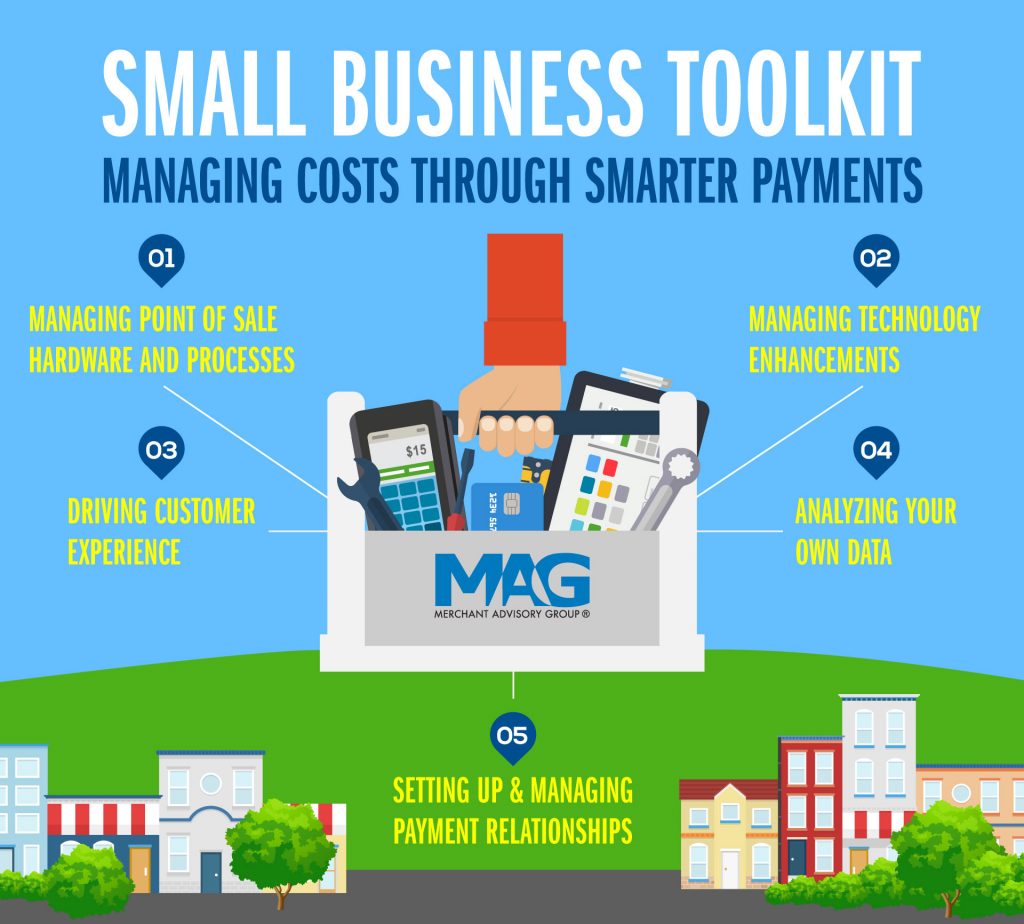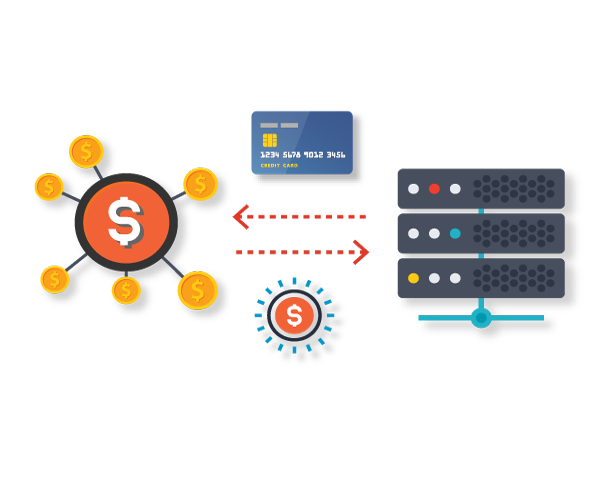Small Business Toolkit
We know that running a small business is no easy feat. Every dollar counts. It’s critical for small business owners to be informed on the latest in payments processing.
There are a number of best practices to help you and your organization navigate card acceptance costs, manage the EMV transition, secure transactions, and reduce fraud losses. Below are a few simple things you can do to optimize payments acceptance for your business.
Click here to learn about more cost management tools for small business owners.

Step 1: Setting Up and Managing Payment Relationships
- Establish a good working relationship with your acquirer/payment processor in which you proactively discuss your payments acceptance needs, examine available fraud prevention and risk mitigation services and how they can better protect your business, and evaluate the total cost of payments to your business.
- Read your agreements to better understand renewal terms and notification provisions for changes and evaluate your relationships frequently.
- Coordinate with your vendors to identify synergies across the business and ways to leverage new or existing partners.
- Work with vendors on the front end so they can assist in optimizing cost control and managing other business needs.
- Stay informed and up to date, share information with other businesses, and utilize trade associations, including the Merchant Advisory Group.
Step 2: Managing Point of Sale Hardware and Processes
- Train, train, train. Education and training for employees is key. Develop an initial onboarding process and annual training program.
- Implement cost control measures for interchange optimization and reducing chargebacks.
- Establish best practices for transaction security.
- Address processing and technical issues as soon as possible.
- Work with vendors to understand how often and what updates need to be made to your point-of-sale (POS) hardware and programs.
Step 3: Managing Technology Enhancements
- Do your research. What payments needs do you have? What pain points do you want to reduce? What benefits do you hope to gain for customers?
- Perform a cost-benefit analysis to determine the cost vs. value to your business.
- Get all your vendors in the same room and talking to each other on a regular basis.
- Actively promote new payment methods that add value to your business and your customers.
- Educate and train your employees as you introduce new technology enhancements.
Step 4: Analyzing Your Own Data
- Review monthly financial statements for any discrepancies, including inconsistent fees or transactions.
- Ensure that changes to fees or programs are communicated accurately to you by your vendors.
- Monitor chargebacks to spot fraud trends, and scan chargebacks more thoroughly.
- Identify processing issues and open lines of communication with your acquirer about any inconsistencies.
- Monitor your registers to see if certain locations have a higher occurrence of fraud or cards not being processed electronically.
Step 5: Driving Customer Experience
- Look for opportunities to improve the speed of service at the POS.
- Minimize customer friction at the POS.
- Identify ways to provide the customer with added value at the POS through discounts, incentives, and rewards.
- Stay informed on the latest customer experience trends.
